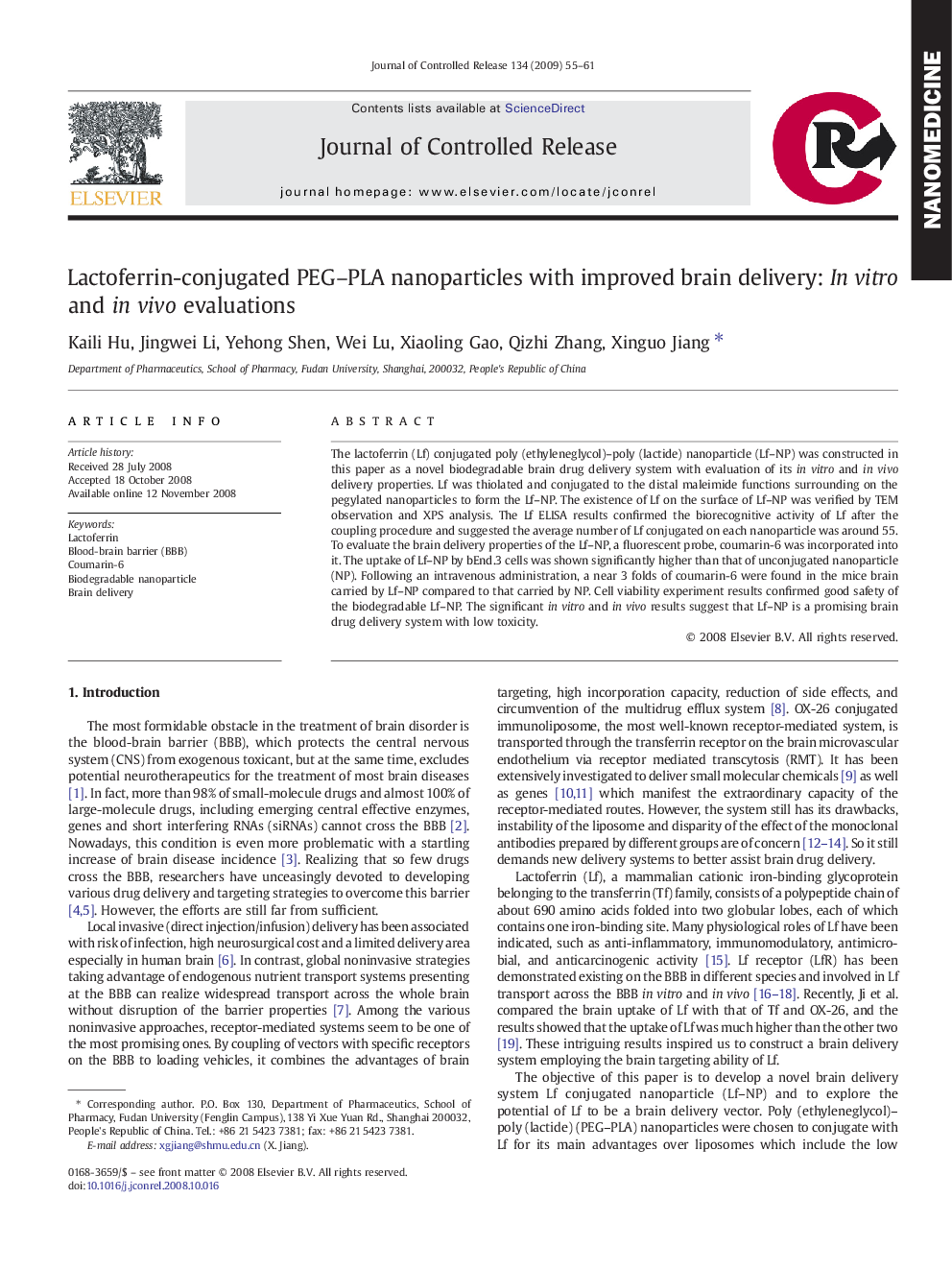| Article ID | Journal | Published Year | Pages | File Type |
|---|---|---|---|---|
| 1426201 | Journal of Controlled Release | 2009 | 7 Pages |
The lactoferrin (Lf) conjugated poly (ethyleneglycol)–poly (lactide) nanoparticle (Lf–NP) was constructed in this paper as a novel biodegradable brain drug delivery system with evaluation of its in vitro and in vivo delivery properties. Lf was thiolated and conjugated to the distal maleimide functions surrounding on the pegylated nanoparticles to form the Lf–NP. The existence of Lf on the surface of Lf–NP was verified by TEM observation and XPS analysis. The Lf ELISA results confirmed the biorecognitive activity of Lf after the coupling procedure and suggested the average number of Lf conjugated on each nanoparticle was around 55. To evaluate the brain delivery properties of the Lf–NP, a fluorescent probe, coumarin-6 was incorporated into it. The uptake of Lf–NP by bEnd.3 cells was shown significantly higher than that of unconjugated nanoparticle (NP). Following an intravenous administration, a near 3 folds of coumarin-6 were found in the mice brain carried by Lf–NP compared to that carried by NP. Cell viability experiment results confirmed good safety of the biodegradable Lf–NP. The significant in vitro and in vivo results suggest that Lf–NP is a promising brain drug delivery system with low toxicity.
Graphical abstractA novel brain drug delivery system was constructed by maleimide-mediated conjugation of biodegradable PEG–PLA nanoparticles with lactoferrin (Lf), a newly discovered promising brain delivery targetor. Lf engineering significantly increased the brain uptake of drugs associated to nanoparticles following an intravenous administration, which might provide a novel effective noninvasive technique for brain drug delivery, especially for biotech drugs.Figure optionsDownload full-size imageDownload as PowerPoint slide
